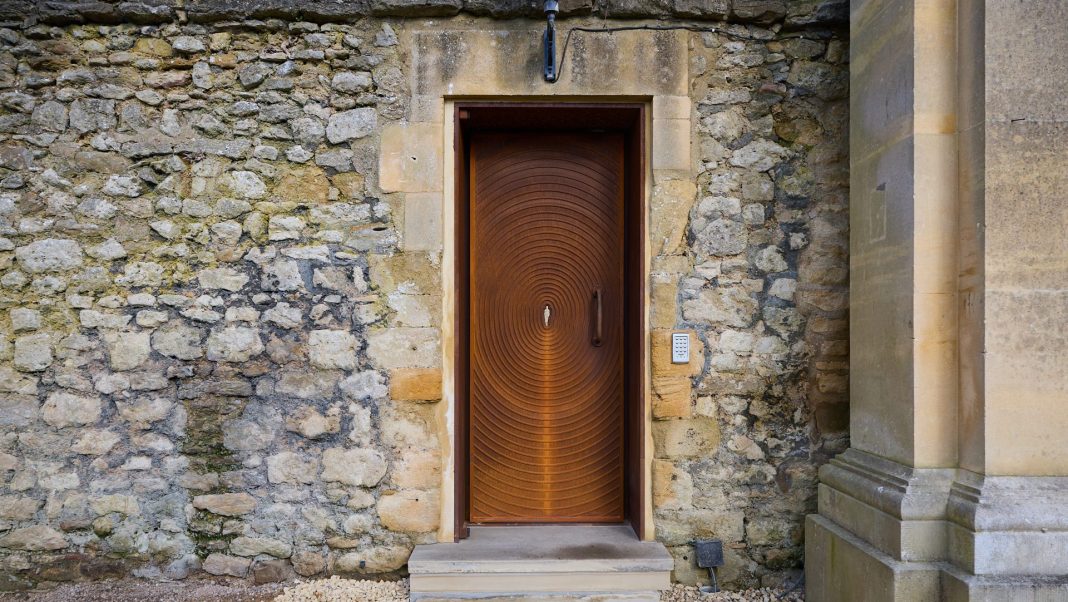A door at Trinity College designed by acclaimed sculptor Antony Gormley in collaboration with UK Poet Laureate Simon Armitage has been dedicated to physicist Henry Moseley. The artwork forms part of the redevelopment of the College and its new Levine Building on site.
Moseley, who earned his bachelor’s degree from Trinity in 1910, conducted research to establish the concept of the atomic number. Moseley’s Law helped to reveal the structure of the atom and changed the arrangement of the periodic table to its current form. The scientist was set to win the 1916 Nobel Prize in Physics, but was killed at the Battle of Gallipoli in August 1915. This dedication was announced as part of the college’s VE Day celebrations.
Trinity’s president, Dame Hilary Boulding told Cherwell: “We are thrilled that two such distinctive and admired artists accepted the commission to create a functional piece of public art. We set out to create something to enhance the public realm and to provide something intriguing and thought-provoking, next to one of the most photographed views in Oxford.
“The door is very much part of Trinity’s desire to engage with the City’s wider community and we hope that it will provide an additional point of interest for pedestrians in the city.”
Gormley’s design features a cutout in the shape of a silhouette walking, through which the viewer can look towards Oxford’s science area. Antony Gormley said: “The idea of the threshold and the function of doors have been interests of mine for a long time; I want the physical engagement of approaching the door and going through it to be in balance with the door itself where word and material come together. Simon echoed the feelings I had about the door as the arbiter of inner and outer in a poem that gives the door a voice or a mind.”
The aperture itself emphasises the passage of time; as it continues to rust, the patina will evolve as the seasons change, and the touch of people passing through the door will polish the surface naturally.
It invites passers-by to consider where things – the body, time, space – begin and end through a series of raised concentric rings radiating out from the central silhouette.
Armitage, honorary fellow of the college, also composed a poem, entitled ‘Hinge’, to appear in relief on the door itself, reflecting the themes represented by Gormley’s design. It highlights the two-way operation of the door, and the differing views which can be seen through the aperture. Armitage states that “the poem is advocating a dialogue and a coming and going between formal and informal learning, between the heart and the head, and the need for a balance between the two approaches.”
The pair have highlighted the focus on collaboration in an effort to link their respective artforms. Simon Armitage was approached in 2020 to write the poem with a view to incorporating it into a new door and he was interested to work with Antony Gormley. Trinity told Cherwell that “finding two artists who positively wanted to work together was an important step in creating a collaborative work of art.”
Armitage said that Gormley’s design “puts the human form and also humanity at the centre of the door and at the centre of the poem”, while Gormley has emphasised the design’s aim of “integrating words into an object” and how he hopes it will “generate thought and feeling both for the passer-by and the regular user.”
The dedication ceremony included poetry readings and a flypast. It was attended by senior scientists from around the world, as well as Princess Elettra Marconi, daughter of radio inventor Guglielmo Marconi. A new portrait of Moseley is also to be unveiled, and the University is to announce the introduction of the Marconi-Moseley Scholarship for Science in the Service of Humanity.


